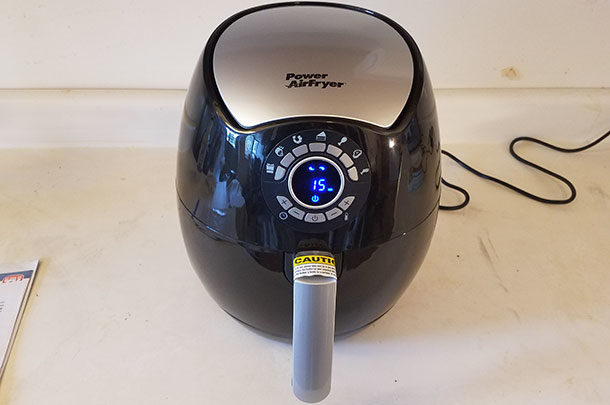The main advantage of feeding a TMR is improved feed efficiency. Each mouthful contains a balanced ration that leads to higher milk production and less metabolic upsets. In addition, the ability to use a variety of products to meet the nutritional demands of the cow allows flexibility in food sources, allowing for savings in ration building. Purchasing commodities in bulk is also often less expensive, adding further savings. Furthermore, the use of less favorable feeds can be masked by mixing all the ingredients with no reduction in feed consumption. A TMR also lends itself well to mechanization.
However, the cost of equipment to implement a TMR can be a major disadvantage. Also, all cows in the group get the same ration. Since individual feeding is not possible, cows in a group should be of similar milk production, stage of lactation and body condition. Moreover, a TMR may not be economical for all herds by reason of facility design or use of pasture.
Dairy rations are formulated on a dry matter (DM) basis, and the amount of each feed fed is on an as-is or as-fed (AF) basis. Feeding ingredients according to weight is only accurate if the moisture content of the feed is accounted for. Small changes in DM will change the nutrient profile of the ration. For example, a ration is formulated to provide 25 pounds of DM per cow with corn silage at 35 percent DM. However, the actual corn silage content is 32 percent DM. This would leave the cow short on feed, resulting in a reduction in milk production and potential health problems.
Fortunately, the DM content of feeds can be measured on the farm. The most commonly used methods of measuring DM are the Koster moisture tester or a microwave oven. However, a new quick test using a kitchen air fryer was recently demonstrated at the 2018 World Dairy Expo. This is a preferred alternative, as it does not have to be watched because there is no way to accidentally start a fire. This new method also traps the fines inside the fryer, enabling a more accurate DM analysis. The specifics for determining the DM of your TMR are as follows:
- Weigh 100 grams of representative sample.
- Place the sample in the air fryer.
- Set the fryer to 250ºF.
- Set a timer for 30 minutes.
- Record the weight of the dry sample.
- Calculate the DM content.
To find the DM, you will need to do some math – don’t worry; it is simple math. To figure out the DM content, you will use the following equation:
- Final dry weight (grams)/initial wet weight (grams) x 100 = %DM
It is important to measure the DM content to maintain a more consistent diet and meet the needs of the animals. The determination of DM should be used to adjust rations on a routine basis. The air fryer method is an easy way to perform DM analysis on the farm. The air fryer that was used for the DM testing (in our case) was bought for less than $100 at a local box store. If your scale does not have grams, you can use ounces. There are roughly 28.35 grams in an ounce; therefore, 3.5 ounces equals 100 grams. The math equation will still be the same; just change the grams to ounces. ![]()
Dan Severson is with the University of Delaware Extension. Email Dan Severson.
This article first appeared in the University of Delaware Dairy Newsletter, November 2018.
References omitted but are available upon request. Click here to email an editor.
Steps in determining dry matter of a TMR sample:
1. Set up your scale – set it to grams and tare to zero. Then weigh out 100 grams.
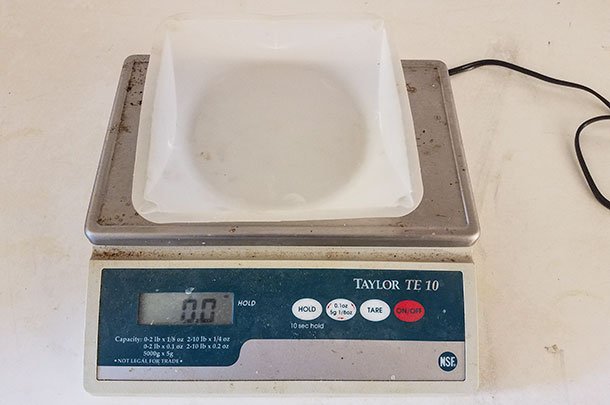
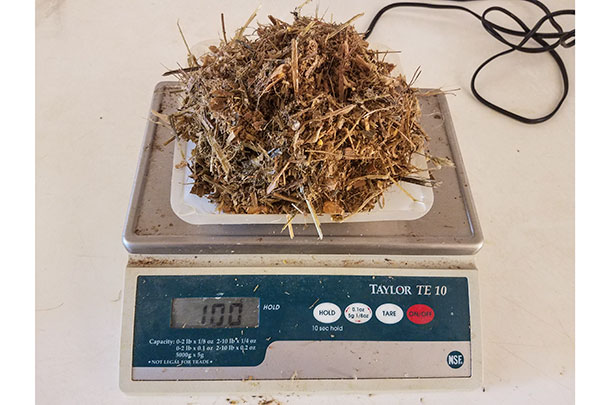
2. Place the sample in the air fryer basket. Turn on your air fryer. Set the temperature to 250ºF and the timer to 30 minutes.
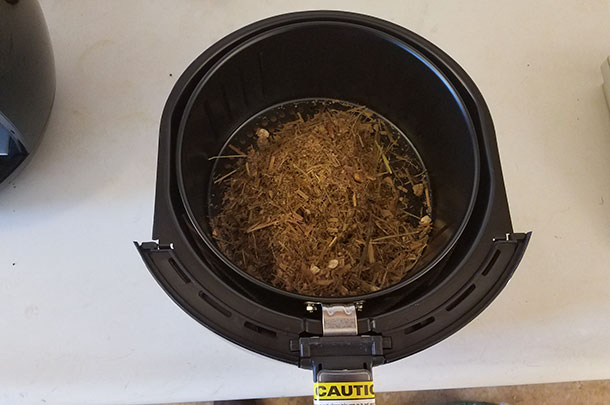
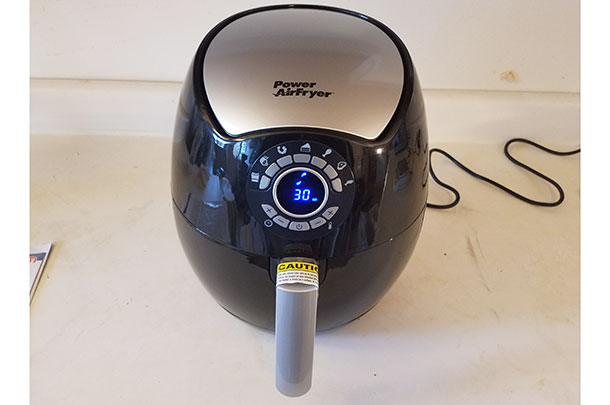
3. Record your final weight. For this example, it was 45 grams. Now do the math to figure out the DM content. Do you remember the equation?
- Final dry weight (grams)/initial wet weight (grams) x 100 = %DM
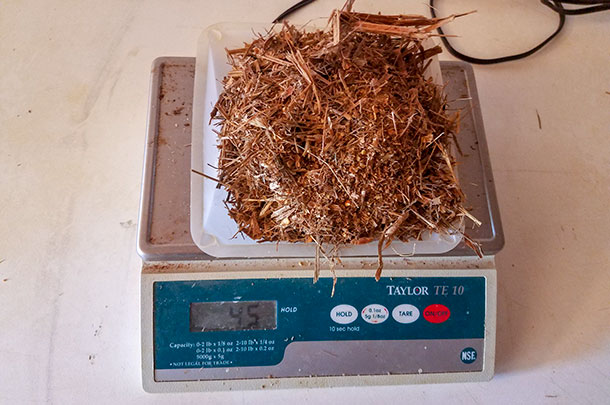
The final dry weight for this sample is 45 grams. Divide the 45 grams by the initial weight of 100 grams and multiply by 100 and you get 45 percent DM.
PHOTOS: Photos provided by Dan Severson.
